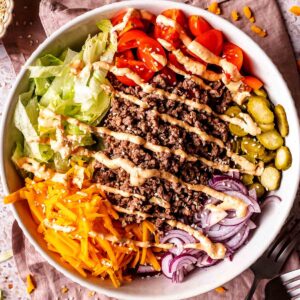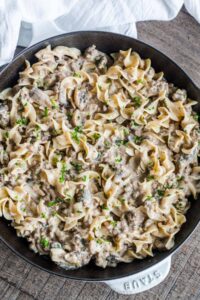Balsamic chicken is a delightful dish known for its balance of savory, tangy, and slightly sweet flavors. The origins of balsamic vinegar trace back to Italy, where it’s a staple in many classic recipes. Combining the rich taste of balsamic vinegar with juicy, tender chicken, this dish is both easy to prepare and incredibly flavorful.
What makes balsamic chicken special is its versatility. The sweetness from the balsamic vinegar complements the savory chicken, creating a rich, deep flavor. It’s a favorite because it’s quick to make, yet impressive enough for a dinner party. Plus, it can be tailored to suit various dietary preferences and restrictions, making it an accessible meal for everyone.
Ingredients
For the Balsamic Chicken Recipe, you’ll need:
-
4 boneless, skinless chicken breasts
-
3 tablespoons balsamic vinegar
-
2 tablespoons olive oil
-
2 cloves garlic, minced
-
1 tablespoon honey or maple syrup (optional for added sweetness)
-
1 teaspoon dried thyme or Italian seasoning
-
Salt and pepper to taste
-
Fresh basil or parsley (for garnish)
-
Optional: 1/4 cup chicken broth (for extra sauce)
Substitutions:
-
For gluten-free: Ensure the balsamic vinegar is gluten-free (most are, but it’s always best to check).
-
For dairy-free: This recipe is naturally dairy-free, so no substitutions are needed.
-
For sweetness: If you prefer a less sweet version, you can omit the honey or maple syrup.
-
For low-carb: This dish is naturally low in carbs, but you could serve it over cauliflower rice or roasted vegetables instead of traditional pasta or rice.
Step-by-Step Cooking Instructions
-
Prepare the Chicken:
-
Pat the chicken breasts dry with paper towels. This helps them sear properly.
-
Season both sides of the chicken with salt, pepper, and dried thyme (or Italian seasoning).
-
-
Make the Balsamic Sauce:
-
In a small bowl, combine the balsamic vinegar, olive oil, minced garlic, honey (if using), and a pinch of salt and pepper.
-
Whisk together until well combined.
-
-
Cook the Chicken:
-
Heat a large skillet over medium heat and add a little olive oil.
-
Once hot, add the chicken breasts and cook for 6-7 minutes per side, or until golden brown and cooked through (internal temperature should reach 165°F or 75°C).
-
Remove the chicken from the skillet and set it aside.
-
-
Create the Sauce:
-
In the same skillet, pour the balsamic vinegar mixture, scraping up any brown bits from the bottom of the pan.
-
Bring the sauce to a simmer, and cook for 3-4 minutes, allowing it to reduce and thicken slightly.
-
Optional: Add chicken broth for extra sauce and flavor.
-
-
Finish the Dish:
-
Return the chicken to the skillet and cook for another 2-3 minutes, coating the chicken with the balsamic sauce.
-
Garnish with fresh basil or parsley before serving.
-
Common Mistakes to Avoid:
-
Don’t overcrowd the pan when cooking the chicken; this prevents it from getting a nice sear.
-
Let the chicken rest before slicing to retain its juices.
-
Be careful not to overcook the chicken, as it will become dry.
Pro Tips and Cooking Techniques
-
Searing the Chicken: For the best texture, make sure your skillet is hot before adding the chicken. This ensures a crispy, golden crust while keeping the inside moist.
-
Balsamic Vinegar Quality: Use a high-quality balsamic vinegar for the best flavor. A good balsamic will offer a rich, slightly sweet taste that enhances the dish.
-
Let the Sauce Thicken: Allow the balsamic sauce to reduce in the pan to create a glaze-like consistency that will coat the chicken nicely.
Variations and Customizations
-
Vegetarian Option: Use portobello mushrooms or tofu as a substitute for chicken. Marinate them in the balsamic mixture and grill or sauté until tender.
-
Gluten-Free Option: This recipe is naturally gluten-free, but ensure the vinegar and any other packaged ingredients are verified to be gluten-free.
-
Low-Carb Option: Serve this dish with steamed broccoli, cauliflower rice, or a side of roasted vegetables for a low-carb meal.
Serving Suggestions
-
Garnishes: Garnish your balsamic chicken with fresh basil, parsley, or a sprinkle of Parmesan cheese for added flavor.
-
Side Dishes: Serve the chicken alongside roasted vegetables, mashed potatoes, or a simple green salad. For a more traditional pairing, serve it with pasta or rice.
-
Drinks: Pair with a glass of crisp white wine, such as Pinot Grigio, or a refreshing sparkling water with lemon.
Nutritional Information
This balsamic chicken recipe is approximately:



-
Calories: 250-300 per serving (depending on the amount of sauce and ingredients used)
-
Protein: 30g
-
Carbs: 8g (mostly from the balsamic vinegar and honey/maple syrup)
-
Fats: 14g (from olive oil and chicken)
-
Fiber: 1g
(Note: Nutritional values will vary depending on ingredient variations and serving sizes.)
Frequently Asked Questions (FAQs)
-
Can I make this dish in advance?
-
Yes, you can prepare the chicken and sauce ahead of time. Store the cooked chicken in the refrigerator and reheat it in a skillet when ready to serve.
-
-
Can I use bone-in chicken?
-
Yes, you can use bone-in chicken, but it will require longer cooking time. Make sure the internal temperature reaches 165°F (75°C).
-
-
How do I store leftovers?
-
Store leftovers in an airtight container in the refrigerator for up to 3 days. Reheat in the microwave or in a skillet over low heat.
-
-
Can I freeze the balsamic chicken?
-
While the chicken can be frozen, the texture of the sauce may change upon thawing. If freezing, consider freezing the chicken and sauce separately.
-
Closing Thoughts
Balsamic chicken is one of those dishes that’s easy to prepare but impressive to serve. With its simple ingredients and bold flavors, it’s perfect for a weeknight meal or a special occasion. The tangy balsamic vinegar paired with tender chicken creates a dish that’s both comforting and sophisticated.
Whether you’re cooking for family, friends, or just for yourself, this recipe is sure to become a go-to in your meal rotation. Don’t forget to share your results, and let us know how your version of balsamic chicken turned out!



